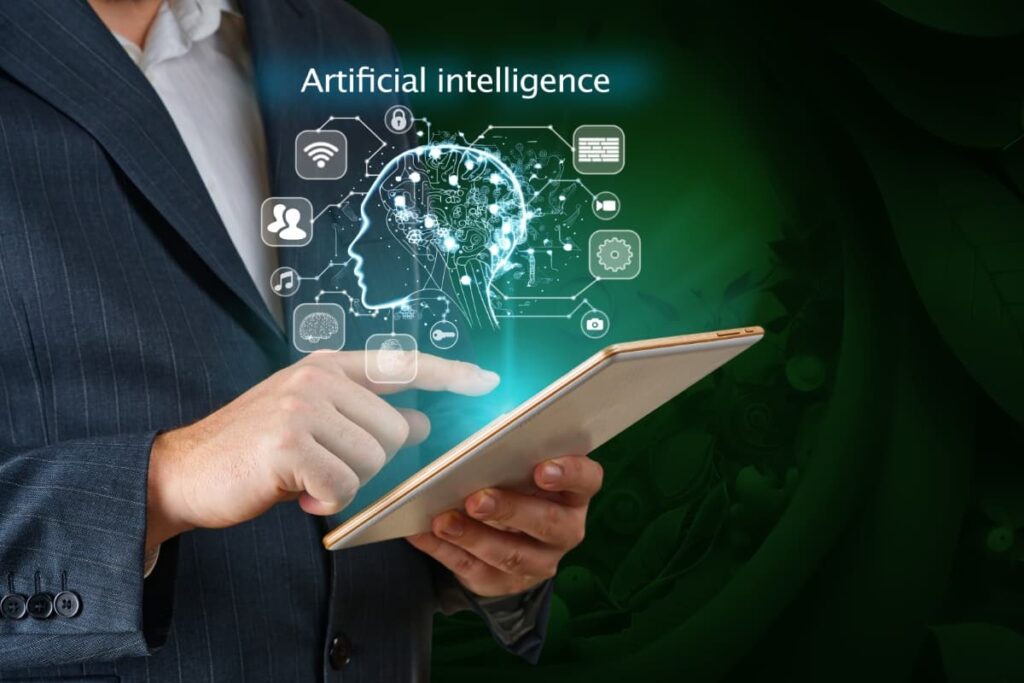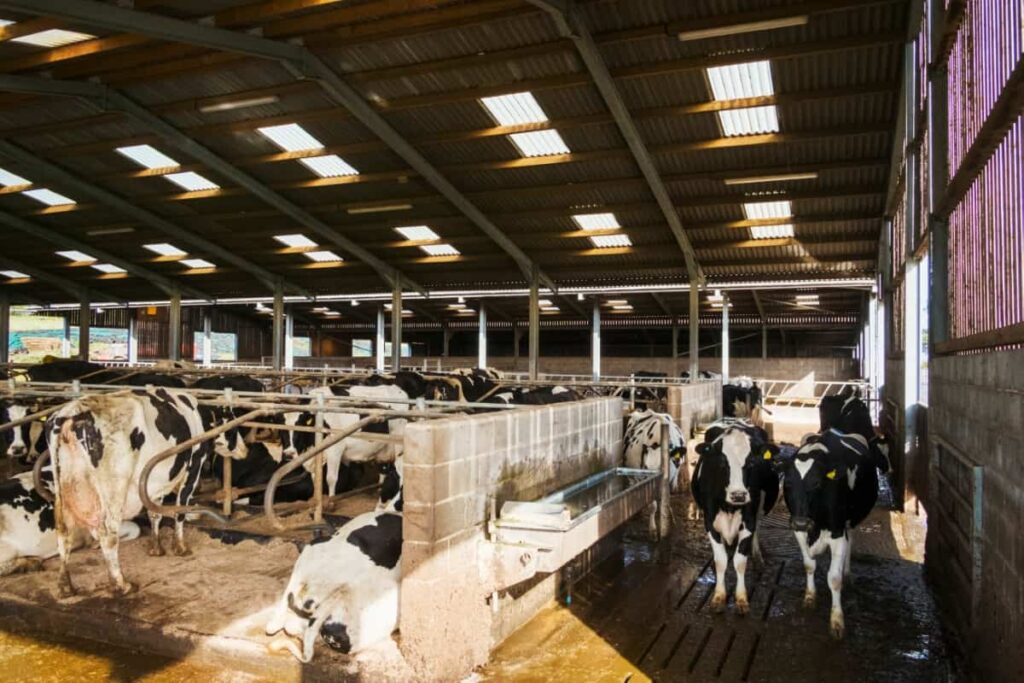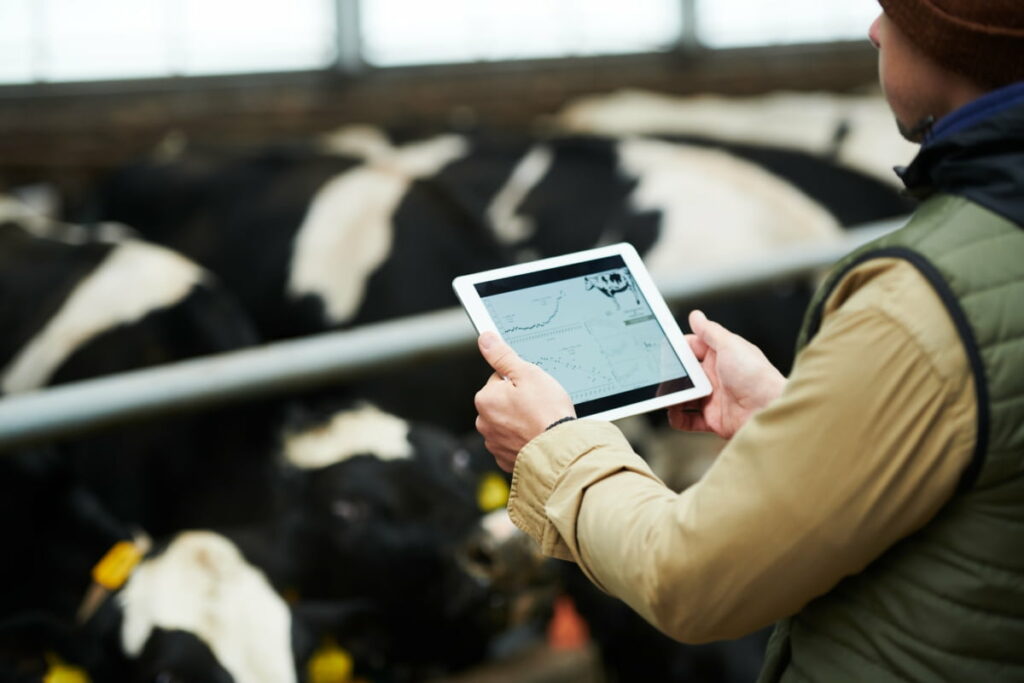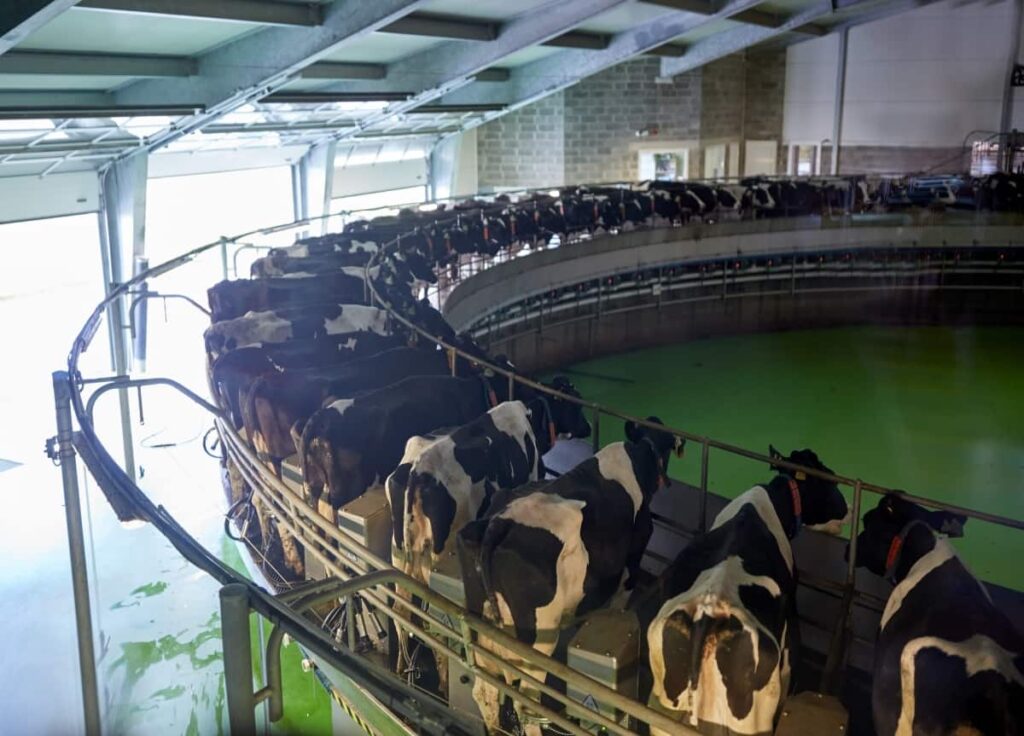Automation in livestock management with AI refers to the use of artificial intelligence systems and advanced technology to optimize various aspects of livestock farming. It involves the integration of sensors, machine learning algorithms, data analytics, and robotics to automate tasks such as monitoring animal health, tracking behavior patterns, managing feed delivery, and controlling environmental conditions.

Automation in Livestock Management with AI
The Impact of AI and Automation in Modern Livestock Management
The impact of AI and automation has brought about significant changes, enhancing efficiency and sustainability in modern livestock management practices. With AI-powered systems, farmers can now monitor their livestock more effectively than ever before. Sensors placed within barns or pastures collect data on temperature, humidity, and even individual animal behavior. Moreover, AI algorithms analyze this data to provide valuable insights into the overall health of animals.
By detecting patterns and anomalies early on, farmers can take preventive measures to ensure optimal conditions for their livestock. Automation also extends beyond monitoring to tasks such as breeding programs. Through AI-driven analysis of genetic traits and historical data on successful pairings, farmers can make informed decisions in selecting breeding pairs that will result in healthier offspring with desirable characteristics.
Transforming Livestock Monitoring and Health Management with Artificial Intelligence
The benefit of using AI in livestock monitoring is its ability to collect large amounts of data in real-time. This allows farmers to track vital signs, detect any abnormalities early on, and take immediate action when necessary. From temperature sensors that monitor heat stress in dairy cows to wearable devices that track movement patterns in poultry, AI enables precise tracking and analysis for better health management.
Moreover, AI-powered algorithms can also predict potential outbreaks or diseases based on historical data. By analyzing patterns and identifying risk factors, farmers can proactively implement preventive measures such as vaccination programs or quarantine protocols. This not only reduces the spread of diseases but also minimizes loss in productivity.
In addition to monitoring individual animals’ health, AI can also optimize feeding practices based on each animal’s specific needs. AI can assist with reproductive management by accurately predicting estrus cycles in female livestock through behavioral analysis or sensor-based technologies.
The Integration of Artificial Intelligence in Dairy Farming
Artificial intelligence (AI) is revolutionizing the way dairy farms are managed, bringing about increased efficiency and productivity. AI systems can analyze information to make informed decisions and optimize aspects of dairy farming operations. One area where AI has made significant strides is in milk production monitoring.
By using sensors attached to cows’ udders, AI-powered systems can collect real-time data on milk yield quality and detect early signs of health issues. This allows farmers to identify potential problems quickly and take measures to ensure the well-being of their herd.
Precision Livestock Farming: How AI-Driven Automation is Enhancing Sustainability
This innovative approach combines artificial intelligence (AI) and automation to revolutionize traditional farming methods and drive sustainability in the industry. By using AI-driven automation systems, farmers can collect real-time data on feed intake, water consumption, and animal behavior.
In case you missed it: Cassava as Livestock and Poultry Feed: Exploring Benefits with Different Animals

Moreover, AI-powered sensors can monitor individual animals’ health status continuously. AI-driven automation enables remote management of farms. Farmers no longer have to check every aspect of their operations physically; instead, they can access real-time data remotely through mobile applications or web platforms. This not only saves time but also reduces carbon emissions associated with transportation.
Implementing AI-Based Systems for Improved Livestock Breeding and Care
Advancements in technology have revolutionized the way we approach livestock breeding and care. With the integration of Artificial Intelligence (AI), farmers can now rely on automated systems to optimize their breeding practices and ensure better animal welfare. AI-based systems analyze vast amounts of data collected from various sources, such as sensors, cameras, and wearable devices. This enables farmers to monitor the behavior of individual animals in real time.
Furthermore, AI-powered systems can assist with genetic selection by predicting an animal’s performance based on its genotype. By considering factors like growth rate, feed efficiency, disease resistance, or milk production potential, farmers can make decisions about which animals to breed for superior offspring. In addition to breeding optimization, AI also plays a crucial role in enhancing animal care. AI-driven automation helps streamline daily tasks related to feed management and environmental control.
The Role of AI in Preventing Livestock Diseases
Livestock diseases can have devastating effects on the agricultural industry. Not only do they pose a threat to animal health and welfare, but they also impact food production and economic stability. Additionally, AI-powered predictive models contribute significantly to disease prevention strategies. These models use machine learning techniques to forecast disease outbreaks based on various variables such as climate changes or population density within a specific geographical area.
AI assists in monitoring livestock health by continuously collecting data on vital signs such as body temperature or heart rate through wearable devices or smart cameras installed in barns. Any deviations from normal values trigger alerts that prompt immediate veterinary attention.
Enhancing Meat Quality and Safety Through AI-Powered Livestock Management Techniques
The quality of meat products is a crucial aspect of the livestock industry. With advancements in technology, AI-powered livestock management techniques are revolutionizing the way we ensure high-quality and safe meat for consumers. AI also plays a major role in optimizing feed composition for livestock. By analyzing various factors such as nutrient requirements, growth rates, and environmental conditions, AI algorithms can recommend precise feed formulations that promote healthy growth while minimizing waste.
AI-powered systems enable real-time monitoring of slaughterhouses to ensure compliance with food safety regulations. By utilizing computer vision technologies, these systems can detect abnormalities during processing and identify potential contaminants or defects in meat products before they reach consumers.
Automated Feeding and Health Monitoring: The Future of AI in Poultry and Swine Management
In the world of poultry and swine management, ensuring proper feeding and monitoring the health of each animal is crucial for optimal productivity. Traditionally, this has required significant time and effort from farmers to observe and feed each animal manually. Automated feeding systems use sensors to monitor the feed intake of each animal, allowing for precise control over their nutrition.
In case you missed it: Maximizing Profitability through Precision Livestock Management for Cattle Farms

With advanced algorithms analyzing biometric data such as body temperature or heart rate collected through wearable devices or cameras installed within barns, potential health issues can be detected early on. This allows farmers to take immediate action by isolating sick animals or providing necessary treatment promptly.
Data-Driven Livestock Management: Using AI to Optimize Feed Efficiency and Growth Rates
With AI-powered systems, farmers can collect and analyze vast amounts of data related to their livestock’s nutrition, health, and performance. By utilizing advanced algorithms, these systems can identify patterns in the data, allowing farmers to make informed decisions about feed formulations and management strategies. Not only does this technology ensure that animals receive precisely what they need to thrive, but it also minimizes wastage by preventing overfeeding or underfeeding.
This not only saves costs but also reduces the environmental impact associated with excessive feed consumption. AI-based technologies enable real-time monitoring of individual animal behavior, enabling early detection of any abnormalities or signs of illness. By promptly addressing potential health issues, farmers can prevent disease outbreaks and minimize the need for antibiotics or other interventions.
Frequently Asked Questions (FAQ) on Automation in Livestock Management with Ai
What is Automation in Livestock Management?
Automation in livestock management refers to the use of advanced technologies to streamline and improve various aspects of animal care, including feeding, health monitoring, and data analysis.
Can AI Help Monitor Animal Health?
Absolutely. AI-enabled sensors can continuously monitor vital signs such as body temperature or heart rate in real-time. Any abnormalities or potential health issues can be quickly detected so that appropriate actions can be taken promptly.
Is Automation Cost-Effective for Small-Scale Farms?
Initial investment costs may change depending on farm size and infrastructure needs; many automated systems offer long-term benefits that outweigh the upfront expenses. Improved efficiency often leads to reduced operational costs over time.
Can Automation Help Prevent Disease Outbreaks on Farms?
Yes. Automated systems enable early detection of potential disease outbreaks by continuously monitoring animal behavior patterns, temperature fluctuations, and other vital signs. This allows immediate intervention measures, such as isolation protocols, to be implemented before the outbreak spreads.
In case you missed it: How to Make Silage for Livestock: Business Plan, Preparation Process for Goats, Sheep, Pigs, and Cows

Conclusion
AI-driven automation also plays a main role in improving efficiency in feeding practices. The use of sensors allows continuous monitoring of parameters like temperature, humidity, water quality, and air composition within the barns or enclosures. This enables early detection of any deviations from optimal conditions that may impact animal health. AI-based technologies enable precision breeding programs by analyzing genetic information from individual animals or herds.
- Aquaponic Farming at Home: A Step-By-Step Guide
- Profitable Village Farming Business Ideas in 2024
- High-Yield Aquaculture: Fast-Growing Fish for Farming
- Effective Fish Pond Construction Techniques for Beginners
- Irrigation and Water Management in Pineapple Farming
- Blossom to Harvest: Mastering Flowering and Pollination in Papaya Farming
- Pig Fattening Essentials: From Selection to Sale for Beginners
- Raising Wagyu Cattle: A Complete Guide for Premium Beef Production
- Soil Types and Their Water Holding Capacity
